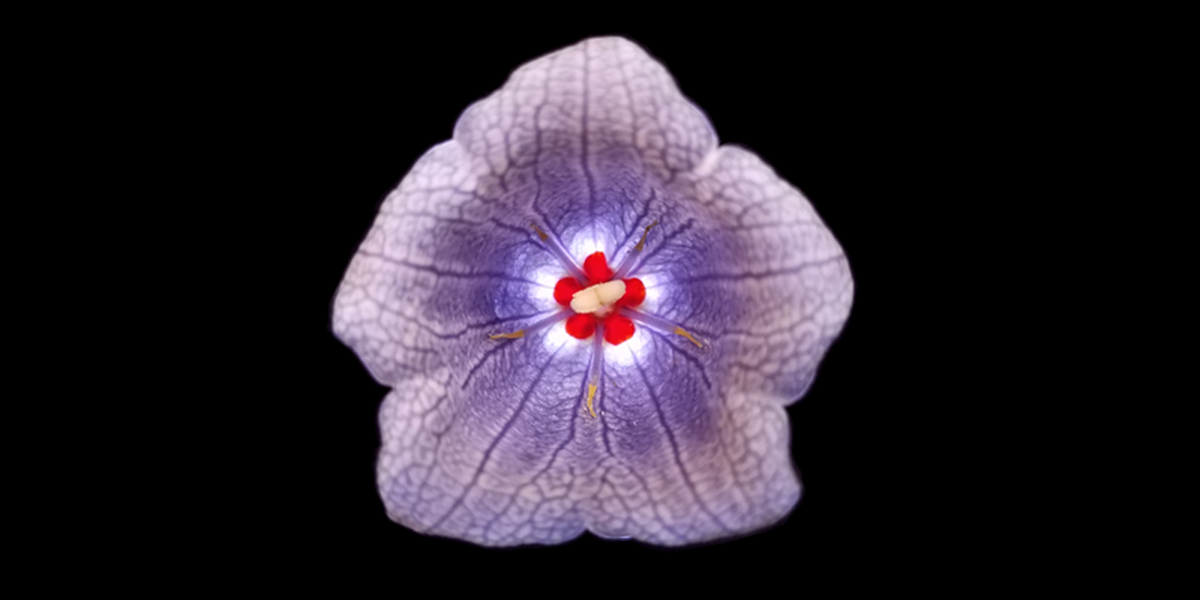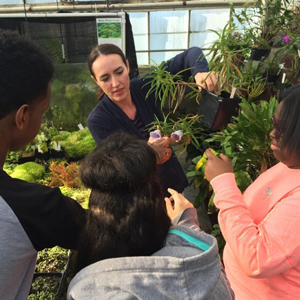
Photo credit: Rahul Roy and Clay Carter
It’s pretty unusual for a scientist to remember a specific day that changed the course of their research, but Clay Carter is an exception. “May 2, 2016 was the day I met that plant,” says Carter, a professor in Plant and Microbial Biology. During a tour of the College of Biological Sciences Conservatory & Botanical Collection with middle school students, he first laid eyes on Nesocodon mauritianus. The captivating plant was dripping red nectar and Carter’s wheels started to turn.
Carter had always studied plant nectar, but on that day his fascination for colored nectar took root. Over the next couple years Carter and colleagues discovered what made the nectar red and how the plant created it. The research is currently posted on bioRxiv.
Plant nectar differs from the sugar water many hummingbird enthusiasts use in a few important ways. It’s filled with specialized metabolites and other chemicals that ward off problematic microbes and may boost pollinator health. And sometimes it’s colorful. Thanks to a new five-year $1.3 million dollar National Science Foundation (NSF) grant, Carter and colleagues will explore colored nectars in 30 plant species.
Studying nectar helps illuminate the long-running evolutionary dance between plants and pollinators. Many plants rely on pollinators for their reproductive success, including the vast majority of global crops. Nectar is costly to produce, but if plants don’t invest in nectar, they might not successfully pass off their genes to their offspring.
“Nectar helps sweeten the deal for pollinators,” says Carter. “Plants need pollinators to like their nectar so the pollinators will visit a neighbor and brush off some pollen when they go in for a second serving of nectar.”
Co-investigators on the NSF grant include UMN-Twin Cities faculty: Professor Adrian Hegeman (Departments of Horticultural Science and Plant and Microbial Biology) and Associate Professor Emile Snell-Rood (Ecology, Evolution and Behavior). Professor Marshall Hampton from University of Minnesota Duluth’s Swenson College of Science and Engineering will also contribute to the research, providing modeling expertise to the work.
As part of the collaborative research, they will study plants with a variety of nectar colors, including black, blue, green, yellow and red. The research team will collect nectar from both natural spaces and conservatory collections and then run analyses to determine the mechanisms responsible for producing the colored nectars. They hope to identify the production process and learn why the colored nectar is secreted in the first place.
“By studying a couple dozen plants, we’re also hoping to discover some novel pigments,” says Carter.
Sourcing sustainable red dye is a major challenge for the food and textile industry. Nesocodon mauritianus offered some insight to alternate dyes and the production is now patented by the University of Minnesota. This got Carter and colleagues thinking that other colored nectars might hold promise as well for sustainable pigment sources.
Beyond novel colorants, there’s a draw to study nectar production because of the agricultural importance. We face significant loss of pollinators and crops that rely on pollinators face uncertainty. Better understanding the sweet sugary, microbe-filled, sometimes colorful substance that have drawn pollinators in for many millennia is an important piece of the puzzle. —Claire Wilson

Lisa Aston-Philander, CBS Conservatory Curator, shows students from Murray Middle School (St. Paul) the blood-red nectar of Nesocodon mauritianus flowers. Photo credit: Tim Chase, Murray Middle School